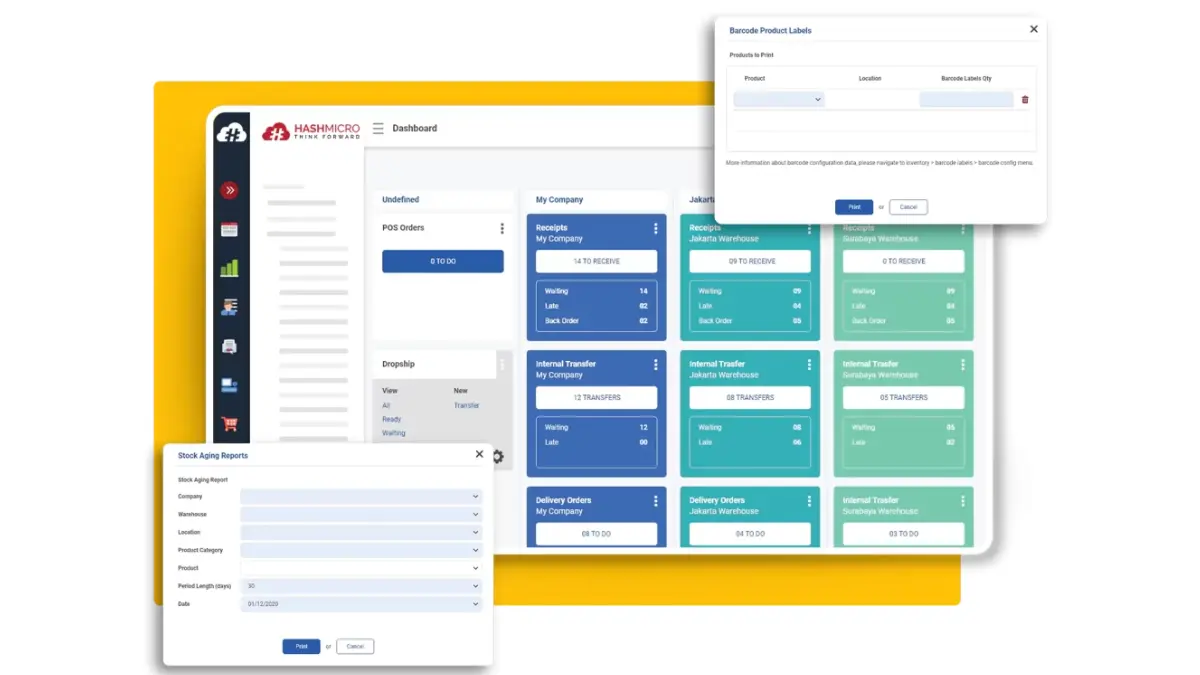What would you do with more time and fewer headaches? Demand forecasting is the key. By optimizing your stock levels and adjusting your production pace, you can transform how effectively you meet market demands. This tool can simplify operations and also enhance your ability to anticipate and adapt to consumer needs.
Demand forecasting isn’t just a buzzword; it’s the secret weapon that lets savvy businesses ensure they have the right products at the right time and price. Interested in optimizing your operations? Dive into our comprehensive guide on the topic and learn how you can predict and satisfy customer needs!
Key Takeaways
|
Table of Content
Content Lists

What is Demand Forecasting?

Demand forecasting involves using historical data, market analysis, and statistical algorithms to predict future customer demands. This process not only helps in anticipating what products or services will be needed but also when and in what quantities, enabling businesses to adjust their operational and strategic plans effectively.
In markets where consumer preferences and economic conditions can shift rapidly, the ability to forecast demand accurately becomes indispensable. It allows companies to manage their resources more efficiently, avoiding both overstocking and understocking, which can lead to unnecessary costs and missed sales opportunities.
Why is it Important?
Demand forecasting is crucial for optimizing resource use and improving production planning in dynamic markets like the Philippines. By predicting future demands accurately, businesses can tailor their production and manage resources efficiently. This strategic approach aids in minimizing costs and enhancing operational efficiency.
Accurate forecasts enable companies to make informed strategic decisions, from market expansions to pricing strategies. They also play a critical role in maintaining high customer satisfaction by ensuring product availability. Effective demand forecasting thus not only supports business growth but also boosts competitiveness and customer loyalty.
Benefits of Forecasting Demands
Understanding the advantages of demand forecasting can empower businesses to optimize their operational and strategic decisions efficiently. It serves as a fundamental tool in managing the dynamics of supply and demand within various market environments.
Some of those benefits are:
- Enhanced Resource Allocation: Demand forecasting allows for better resource management, aligning manpower and materials with anticipated market needs to maximize efficiency and reduce waste.
- Improved Production Scheduling: Accurate demand forecasts help businesses plan their production cycles more effectively, preventing overproduction and underproduction issues.
- Strategic Decision Making: With reliable demand forecasts, companies can make informed decisions about expansion, product launches, and other strategic initiatives.
- Increased Customer Satisfaction: By ensuring products are available when needed, demand forecasting helps in maintaining high levels of customer satisfaction and loyalty.
- Cost Reduction: Effective forecasting helps minimize holding costs and other operational expenses by aligning inventory levels with actual market demand.
These benefits illustrate how demand forecasting is not merely a predictive tool but a strategic asset that supports broader business objectives. By integrating comprehensive forecasting methods, businesses can navigate market fluctuations more smoothly and uphold a competitive edge.

Demand Forecasting Types
This is crucial for businesses to anticipate market needs and strategize accordingly. Understanding the various types of demand forecasting can equip companies to adapt their operations and planning to better suit market demands and opportunities.
Passive demand forecasting
Passive forecasting is typically used by businesses with stable demand patterns and conservative growth targets. This approach relies on historical data and assumes that past trends will continue into the future, making it suitable for established products in stable markets.
Active demand forecasting
Active forecasting is used by dynamic businesses that aim for growth and need to respond quickly to changing market conditions. This method incorporates current market trends, competitive actions, and changes in consumer behavior to forecast demand more accurately.
Short-term projections
Short-term projections focus on the immediate future, generally covering up to one year. This type of forecasting is crucial for operational planning, such as inventory management and staff scheduling, to meet immediate market demands.
Long-term projections
Long-term projections look several years into the future and are integral for strategic planning. These forecasts help businesses prepare for future growth, capital investments, and major market shifts, relying on a broad analysis of market trends and economic indicators.
External macro forecasting
External macro forecasting considers broad economic conditions, industry trends, and socio-political factors that affect market demand. It is used by businesses to plan for external risks and opportunities, ensuring long-term stability and growth.
Internal business forecasting
Internal business forecasting focuses on a company’s specific operations and needs. It uses data from internal sources, such as sales performance and production capacities, to forecast demand related to the company’s direct activities and capabilities.
Each of these forecasting types offers distinct advantages and is chosen based on the business’s specific needs, market conditions, and strategic goals. By employing the appropriate forecasting methods, companies can enhance their decision-making process, optimize resource allocation, and improve overall business performance.
Integrating Technology in Demand Forecasting

Technological advancements are reshaping demand forecasting and enhancing precision and responsiveness. AI demand forecasting and machine learning delve deep into market trends and consumer behaviours, offering timely and accurate insights. This integration allows businesses in the Philippines to swiftly adapt to market shifts.
The use of real-time data analytics and IoT devices improves inventory management and operational efficiency. These technologies ensure businesses can better anticipate market demands and adjust their strategies accordingly. Ultimately, this leads to more effective resource use, reduced waste, and greater customer satisfaction.
Also read: 7 Best Forecasting Tools for Philippines Business 2024
Implementing Effective Demand Forecasting
Effective demand forecasting is vital for businesses aiming to optimize operations and anticipate market needs accurately. The first step is to set clear objectives, defining what the business hopes to achieve through its forecasting efforts. This clarity guides the scope and focus of the forecasting activities.
- Set Clear Objectives: Clearly define your business goals and what you aim to achieve with demand forecasting.
- Gather and Analyze Data: Collect relevant data and utilize analytical tools to understand market trends and customer behaviors.
- Choose Appropriate Methods: Select forecasting methods that align with your business model and market environment to ensure accuracy.
- Review and Adjust: Regularly evaluate the effectiveness of your forecasting and make necessary adjustments to improve accuracy and relevance.
By following these steps, businesses can create a robust demand forecasting system that supports strategic decision-making. This system not only helps in anticipating market demands but also in adjusting strategies to meet these demands effectively, ensuring sustained business growth and competitiveness.
Challenges to Expect
Implementing effective demand forecasting can be challenging due to several factors. One of the main difficulties is managing the volatility of the markets, which can significantly impact the accuracy of forecasts. Additionally, ensuring the quality of data used in forecasting processes is crucial, as poor data can lead to inaccurate predictions.
- Market Volatility: Navigating rapid changes in market conditions can make it difficult to maintain accurate forecasting.
- Data Quality Management: Ensuring high-quality, relevant data is essential for effective demand predictions.
- Enhanced Data Collection: Improving data collection processes can help address issues with data quality.
- Advanced Analytics: Utilizing sophisticated analytics tools can mitigate the effects of market volatility by enhancing forecast accuracy.
By addressing these challenges through enhanced data management and the use of advanced analytics, businesses can improve the reliability of their demand forecasting. This improvement is critical for making informed decisions that align with both current market conditions and long-term strategic goals.
Also read: Understanding Seasonal Demand and How it Affects Businesses and Consumer Trends
Efficiently Manage Demand Forecasting Using HashMicro’s Inventory System

HashMicro’s inventory software enhances demand forecasting with advanced features that streamline inventory management. Utilizing cutting-edge technology, this system ensures that businesses can optimize their operations to meet customer demands more efficiently and accurately.
Some of the features are:
- Stock Forecasting: Utilizes predictive analytics to accurately forecast future demand, helping to maintain optimal stock levels.
- Quality Control Management: Ensures that all inventory meets company standards, which helps maintain customer satisfaction and reduces returns.
- Stock Optimizer per Warehouse: Automatically adjusts inventory levels in each warehouse based on forecasted demand to maximize storage efficiency.
- FEFO – First Expiry First Out: Prioritizes the dispatch of goods based on their expiration dates, reducing waste and improving inventory turnover.
- Stock Aging Report: Provides insights into stock age, helping to manage and rotate inventory effectively to avoid obsolescence.
By leveraging these features in HashMicro’s inventory system, companies can achieve a more robust and responsive approach to demand forecasting. This not only improves the accuracy of inventory management software but also supports better overall business decisions, leading to increased efficiency.
Conclusion
Demand forecasting is indispensable for businesses aiming to thrive in the competitive Philippine market. By accurately predicting future demands, companies can optimize their operations and align their offerings with customer expectations, thereby enhancing profitability and sustainability.
HashMicro, with its advanced inventory management solutions, supports businesses in achieving precise demand forecasting. By utilizing features like stock aging analysis and barcode tracking, HashMicro’s inventory management software helps businesses streamline their operations and respond adeptly to market demands.
For more details on implementing these strategies within your business, try a free demo with HashMicro to see how their solutions can be tailored to your specific needs.

Frequently Asked Questions
-
What is meant by demand forecasting?
This involves predicting future customer demand using historical data and market analysis. It helps businesses plan their inventory and production to meet anticipated needs efficiently.
-
What are the techniques of demand forecasting?
Techniques include qualitative methods like expert opinions and market research, and quantitative methods such as time series analysis and econometric models. These methods analyze past data and market trends to predict future demand.
-
How do you manage demand forecasting?
Managing it involves setting clear objectives, collecting and analyzing relevant data, and choosing appropriate forecasting methods. Regularly reviewing and adjusting forecasts based on actual outcomes is crucial to improving accuracy and relevance.



































